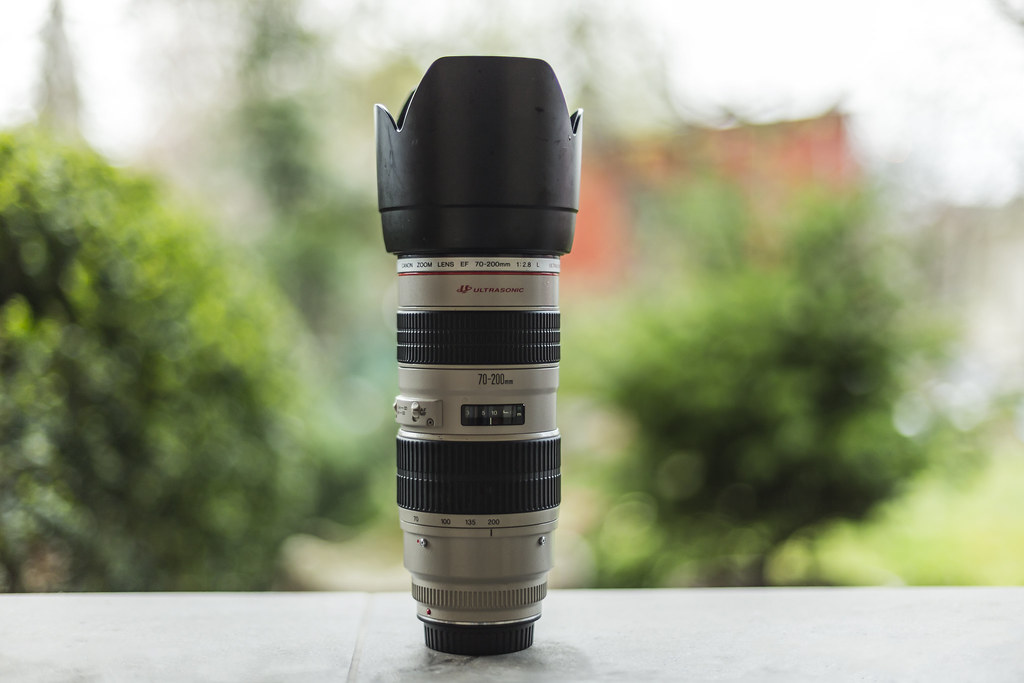The topic of lenses seems to pose an ongoing dilemma for every photographer out there. Besides the fact that there are hundreds of designs, more than ten major lens manufacturers, and several different technologies, there are a few other factors that spice up the decision-making process when it comes to purchasing a new lens. The kind of lens you buy must ultimately be determined by what you use it for.
 Photo by Benjamin Balázs
Photo by Benjamin Balázs
Let’s first look at telephoto lenses. They vary in length and can be used in a surprisingly vast number of ways, including portraiture and wildlife photography. Here are several reasons why you should consider buying a telephoto lens.
Portraiture
I simply adore shooting portraits with a telephoto lens, but I’m not the only one. In fact, you’ll see many photographers using the 70-200 f/2.8 to shoot portraits, and they do it at the longer end of the lens. This is due to the fact that the longer the lens is (higher mm number) the more background blur you get for the same aperture. Therefore if you want to separate your portrait nicely from the background while keeping most of the portrait in focus, a telephoto lens is the best choice for that. Wide aperture shorter lenses will separate the portrait from the background as well, but in that case the focus field is smaller thus keeping certain things in focus.
 Photo by Angel James de Ocampo
Photo by Angel James de Ocampo
For example, when using 50mm f/1.4 lens, if your focus is on the eye, the nose and the ears will be out of focus. On the other hand, if you are using 200mm f/2.8 lens you’ll have the so called “shoulder focus” where the portrait will be completely in focus, from the nose to the shoulders and the background will be nicely blurred, as well.
Wildlife
 Photo by Patana Rattananavathong
Photo by Patana Rattananavathong
This is probably the most obvious reason that you should consider getting a telephoto lens for, since wildlife is, well, wild. You don’t have much of a choice in this matter except to shoot from a distance because your mere presence will chase the wildlife away and you won’t get a shot. However, things that you need to know in this area is what kind of a telephoto lens you need? For wildlife you are probably better off with a zoom lens, something in the range of 100-400mm and preferably with image stabilization. Mount that lens on a cropped sensor body, or have a teleconverter ready in the bag if necessary.
Zoom Compression
 Photo by Andreas Levers
Photo by Andreas Levers
Zoom compression is a very useful thing oftentimes, mostly due to the fact that it allows you to manipulate the background easily. Using a telephoto lens you can effectively compress the background making it appear bigger and closer than it actually is. This can be useful for portraiture, for example if you want your portrait to appear closer to certain thing which is quite far in the background (for example, you want to make the moon appear bigger in the frame next to your subject, you can do it with a telephoto lens), or it can be used for landscape shots as well with the very same purpose. For landscape it can be a bit tricky with the hyperfocal distance, but if you do your maths correctly, you’ll have no issues.
Focus Speed and Accuracy
To begin with, even though the field of focus is a bit wider than a fast 50mm lens, you still retain the nicely blurred background. However, since telephoto lenses have much more elements inside, especially those for zooming, they travel more when focusing, meaning from closest focus point to infinity, a telephoto lens with USM/HSM motor will need far more time when compared to wide angle lens, because the physical distance that the internal elements need to travel is much greater. As a compensation, many of the professional telephoto lenses (like the 70-200mm f/2.8) have a focus limiter, meaning you can set the minimal focus distance to be much further, so the lens seeks focus in selected area from infinity to the selected focus distance, effectively cutting the focus time by half, all by sacrificing 1 meter of minimal focus distance.
Also, since the field of focus is wider but more compressed, if the lens misses focus a little, the result won’t be as drastic as it would be when using a shorter lens with wider aperture. This way you’ll get much more usable shots even when focusing in difficult conditions.
Which telephoto lenses do you own, and which one is your favorite? Do you prefer using telephoto lenses over regular wide-aperture ones? Don’t hesitate to share your thoughts in the comments section below!





2 Comments
With all the talk of buying primes, your article is a refreshing change. The fact is that most of us can’t afford a wide range of prime lenses, but we can buy decent telephoto lenses. Thanks for the article and the information you presented!
I use the Canon 70-200mm f2.8 IS lens with my EOS 7DII for many subjects including photographing nature, children playing with LEGO at work for their parents etc. I’m very happy with it I get very good results. Good field of view.